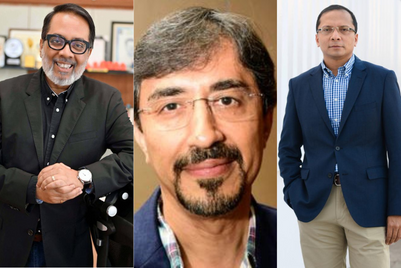
Eighty three Indian athletes travelled to London 2012 with the hope of bringing glory back to the country. Six of them transformed the hope into glory, as the London Summer Olympics proved to be India’s most successful ever.
Mary Kom, Yogeshwar Dutt, Saina Nehwal, Sushil Kumar, Gagan Narang and Vijay Kumar are the athletes who made the nation proud. For how long will the country be thanking these successful athletes?
Shailja Vohra, national director, Maxus ESP, is of the opinion that the Olympians will be in the limelight until the start of the T20 cricket world cup in Sri Lanka. She says, “I expect the buzz to stay till the next big cricket tournament starts, which is the T20 world cup in Sri Lanka. The sports we won medals in include wrestling, boxing, badminton and shooting. None of the winners had a glamour quotient (except Saina Nehwal). Cricket and the coming back of Yuvraj after fighting cancer will take away all the attention from the Olympics medal winners. To give you an example of how quickly we forget our medal winners, consider Abhinav Bindra who won gold in the last Olympics. He is not even mentioned by the media. In the same way, Vijender in boxing has been forgotten despite his good looks. On the other hand, famous cricketers like Dhoni and Virat Kohli may have a bad series but they continue to get advertisements even after a bad series.”
Keeping this problem in mind, Milagrow launched a campaign leading up to the Olympics. Rajeev Karwal, founder and CEO, Milagrow Business and Knowledge Solutions, says, “We didn’t know how many medals India will win and who will win those medals. But we always knew that whoever wins will be forgotten within a couple of months. We are an Indian brand with an Indian heart with India’s interest in mind. So we thought of something so that these athletes are not forgotten.”
The company has named a product after each of the medal-winning Indian athletes at London 2012. It declared at the time of the first Indian medal won by Gagan Narang, that it would co-brand a product in his name, and the athlete would get five per cent of Milagrow’s revenue on the product for the life time of the product. “Selling 10,000 of these units should not be a problem – they are priced at around Rs 10,000 so we shall be able to contribute around 50 lakhs to a winner respectively,” adds Karwal.
Brands choosing to associate with the winning Olympians are few and far between, according to industry watchers. Hitesh Gossain, senior VP, strategy and business development, Percept Talent Management, is of the view that the medal winners should be followed at events other than the Olympics too to make them attractive for brands. He says, “Other than the Olympics, which take place once in four years, these athletes participate in other events too. Unless there’s an increase in viewership for these events, brands can’t do much.”
Aditya Hitkari, CEO, brand advisory business, Globosport, has advice for brands looking to use these winners. “Brands must talk about real life stories of these Olympians. They should show the fact that they have beaten plenty of Indians (first) and they are the in the top three of their respective sport in the planet. If used correctly, this can give brands an advantage over competitors. Brands that currently support these athletes are doing so in the thorough sense, even if on a relatively smaller scale (when compared to celebrities),” said Hitkari.
Ajay Kakar, CMO, financial services, Aditya Birla Group, suggests that the mistake marketers make is compare Olympian athletes to cricketers. He says, “Regrettably, we have this bad habit of comparing any sportsman to a cricketer. Cricket cannot be compared to any of these sports, simply because it is a mass sport. There is only a small percentage of people who are aware, track or celebrate these Olympic sports. The Olympics take place only once in four years whereas cricketers are in action every week.”
He adds, “Not many remember the names and the number of medals Indians won at Beijing in 2008.” One hopes that our stars of London 2012 don’t suffer the same fate.

Media
Shailja Vohra, national director, Maxus, ESP
“The problem is that the Games happen once in four years. There is not much that brands can do. Sometimes I wish the Olympics happened once every two years. Brands do not have much exposure to Olympic winners from India. In the past 40 years, we have had very few individual Olympics winners. Yuvraj has not played cricket for so long, despite that he is covered by the media. Olympic winners need the same kind of respect and coverage. Brands need to work with these winners for the next four years.”

Marketer
Rajeev Karwal, founder and chief executive officer, Milagrow Business and Knowledge Solutions
“I am personally offended when stars like Saina Nehwal are beautified and used as fashion icons by brands. Brands should not forget that Nehwal is a sportsperson first and should work around that ability of hers.”

Markerter
Ajay Kakar, chief marketing officer, financial services, Aditya Birla Group
“Reports around these Olympians’ worth doubling means nothing. An athlete who was previously earning Rs 15 lakhs is now getting Rs 30 lakhs - the additional Rs 15 lakh is not that immense in the larger picture. They have put in years of hard work, incurred lots of expenses and are now returning to their jobs where they are paid menial wages. They deserve better.”

Talent Manager
Hitesh Gossain, senior VP, strategy and business development, Percept Talent Management
“Hiring an Olympian as brand ambassador is a definite advantage for brands. Brands can mould the personalities of these athletes according to their requirement. This cannot be done with established celebrities like Salman Khan or Katrina Kaif. India as a country is still looking for heroes. Mary Kom being a mother, seems to be attractive for brands looking out for such an endorser. The rest come from small towns, and can be portrayed as the face of a true growing India.”

Talent Manager
Aditya Hitkari, chief executive officer, brand advisory business, Globosport
“Cricketers and film stars remain the more attractive celebrities for marketers. But, if these athletes are used in the right way, they can be effective too. Instead of using these athletes as larger than life stars, they should be used with real life stories. A story that can be tapped into is, Mary Kom didn’t want to be a boxer until 1998, but moved to the sport and has now won a Bronze. It was a true life story and brands must work on that aspect.”


.jpg&h=334&w=500&q=100&v=20250320&c=1)
.jpg&h=334&w=500&q=100&v=20250320&c=1)


.jpg&h=334&w=500&q=100&v=20250320&c=1)


.jpg&h=334&w=500&q=100&v=20250320&c=1)
.jpg&h=334&w=500&q=100&v=20250320&c=1)


.jpg&h=268&w=401&q=100&v=20250320&c=1)


.jpg&h=268&w=401&q=100&v=20250320&c=1)
.jpg&h=268&w=401&q=100&v=20250320&c=1)


